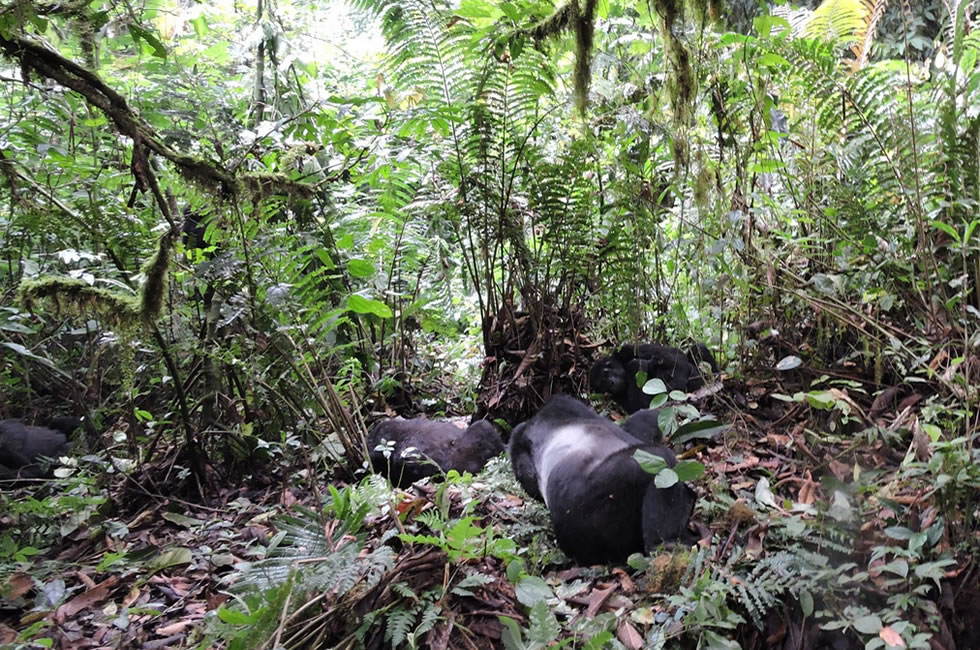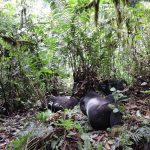Gorilla Trekking and Gorilla Habituation are two exciting activities that you will be introduced to when you visit Uganda. There is no difference in the processes of these two activities but instead on the number of people who can be booked for the activity, time spent in the presence of the mountain gorillas and price variations.
Before mountain gorilla groups are opened to visitors (for trekking), they have to first undergo some sort of training to make them accustomed (used or less timid) to human presence and this process is called “habituation”. This is done to make them free and at ease with humans and normally lasts from two to three years, and is fundamental for the on-going research, protection and safeguarding of the Giant Apes in their natural environments. Gorilla Trekking Tours are undertaken in all the four gorilla-habiting National Parks in East and Central Africa-Mgahinga Gorilla and Bwindi Impenetrable National Parks of Uganda, Volcanoes National Park of incredible Rwanda and legendary Virunga National Park of the Democratic Republic of Congo. For the Gorilla Habituation Experience is only offered in Uganda’s Bwindi Impenetrable Forest. Having got the snippet of these two activities, here are the differences between Gorilla Trekking and Gorilla Habituation;
First, fully habituated gorilla groups (ones that are fully trained) are visited during standard gorilla treks while only semi-habituated gorilla groups (or the ones still undergoing training) are visited during Gorilla Habituation Experience. For this reason, they are wilder, more timid and scared of humans than the fully habituated gorillas.
Number of persons involved
A maximum of 8 visitors are attached to a fully-habituated gorilla group visited during standard gorilla trekking safaris, while only four travellers are attached to the semi-habituated gorilla group during the once in a lifetime Gorilla Habituation Experience within Bwindi Impenetrable National Park. The small group size is attributed to the wilder nature of these Giant Apes hence are likely to become aggressive or being scared when visited by crowds.
Total time spent with the Mountain gorillas
While gorilla trekking and the Gorilla Habituation Experience involve hiking through the thick rain forest in search of gorilla families, the time spent with the Great Apes varies significantly among these two amazing activities. The total time spent observing and photographing giant apes in their natural habitats during standard gorilla trekking is only one hour while for the Habituation Experience, visitors are given four hours to observe and take photos of these beautifully gentle beasts in their natural environment.
Price of Gorilla permits
Gorilla Trekking in Uganda costs $700 for the foreign non-resident tourists, $600 for the foreign resident visitors while the East African resident tourists are charged only Shs. 250,000 per person. The permit price for the Gorilla Habituation Experience is higher but it is worthwhile because you will have more time in the presence of the mountain gorillas. With $1500 per person for the foreign non-resident visitors, $1000 for the foreign resident visitors and Shs. 750,000 for the East African resident visitors, you will be able to obtain a permit.
For both gorilla trekking and the Gorilla Habituation Experience, the packing list is just the same and therefore your ultimate packing list should include sturdy and well-fitting hiking boots, lightweight and breathable rain jacket, First aid kit, long-sleeved shirts, enough drinking water to keep you hydrated throughout the trek, good camera without flash, insect repellant, energy-giving snacks, re-usable water bottle, safari pants, gardening gloves and many others.
When is the best time to go for gorilla trekking and Gorilla Habituation?
Gorilla Trekking and the Gorilla Habituation can be undertaken all year round, because the temperatures of Bwindi Impenetrable Forest normally rove within 20 and 25 Celsius degrees. The months of December to February and June to September are more favorable for these two activities, owing to the lower chances of rains.


